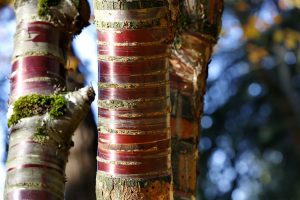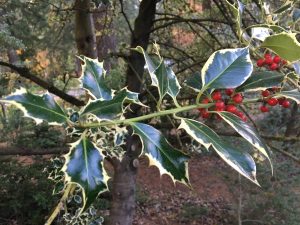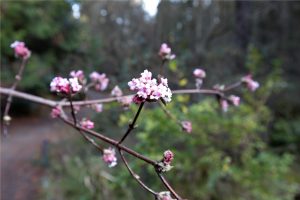December is a beautiful time to visit the Arboretum! Our global tree collection showcases species that have brightly-colored bark, winter-blooms, bright fruits, and fun evergreen foliage. Try a walk to the Winter Garden, or take advantage of the quiet season and see the Redwood Deck and the rest of the Conifer Collection.
Winter Weather
Winter weather like snow and ice can occur in December at the Arboretum. Plan ahead and check our Recent Updates page for information about Visitor Center and park road closures resulting from unsafe conditions. Otherwise, make sure you dress for the weather before your visit! Wear layers and shoes that can get muddy!
Recommendations for Your Winter Visit
Download your own Hoyt Arboretum Winter Hike BINGO!


Stop by the Visitor Center (10am-4pm) to grab a map, get walk recommendations, and check out our nature-themed gifts. All proceeds from the gift shop support Hoyt Arboretum Friends programs, and as a thank you, our members receive 10% off all items.
You can also check out Visitor Information Specialist Greg Hill’s blog Recommendations for Your Winter Visit
Or explore seasonal Self-Guided Tours in our Plant Database.


Pop-Up Nature! Crafty Natureland
December 21, 2024 – December 22, 2024 at 10:00 am – 1:00 pm
Get inspired by the forest treasures found at Hoyt Arboretum to create your own personal crafts!
All materials will be provided with crafting suggestions and instructions available. Crafts are great for ages 5-12, but all are welcome!
This is a FREE program at the Hoyt Arboretum Visitor Center
Trees to See!


Birchbark cherry
The smooth, glossy bark of younger trees is striped with rings (called lenticels) and, as the tree matures, the bark peels like a birch. Trees grow 20 to 30 feet tall and produce 4 inch long leaves with serrated edges before shedding them for winter. The tree is native to southwestern China and Tibet and is also known as Tibetan Cherry and Paperbark Cherry. When the tree loses its leaves, the gorgeous mahagony-red bark is impossible to miss.
Location: Wildwood Trail near east water tank


Holly
Winter boughs of holly decked the halls of pagans as symbols of fertility and rebirth. Later, Christians adopted evergreen holly and its berries as symbols of their faith at Christmas time. The genus Ilex includes 600 species of shrubs and trees. The more familiar species are evergreen, although some species lose their leaves. English and American holly trees can grow 50 feet tall, bearing prickly evergreen leaves and red berries. Birds may depend on the red berries as a main source of their winter diet.
Location: Holly Loop, located up the steps, just south of the main parking lot on Fairview Blvd.


Dawn viburnum
The highly popular Dawn viburnum produces fragrant, tubular, pink-rosey flowers that appear in dense clusters after the plant’s leaves have fallen. The blooms last through winter and early spring and eventually give way to red drupes. The “x” in the name reflects that this cultivar is a hybrid. It is a cross between Viburnum farreri and Viburnum grandiflorum that was developed in the mid-1930s at Bodnant Garden in Wales, which explains the “bodnantense” in the name. Its cinnamon-color bark is striking in fall.
Location: Winter Garden on Beech before Wildwood Trail on Cascade Dr.
Stay Up-To-Date with Hoyt Arboretum!
Subscribe to our email newsletter
AND
